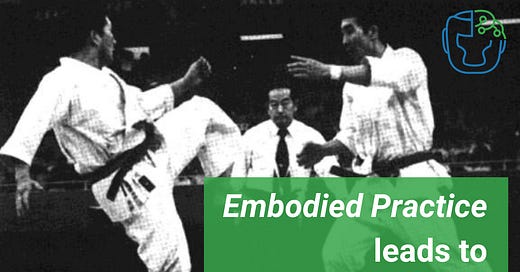Embodied Practice leads to Deeper Skill [How We Learn to Move, Chapter 5 Companion]
The concept of embodied perception, how it changes training, and why it's so important for martial artists to understand.
The air is pulled taut in the park.
It’s 1967 and Mickey Mantle steps up to the plate against Baltimore Orioles pitcher, Stu Miller. Mantle taps the home plate, throws a couple trial swings, and takes his stance.
Miller stretches and rotates his body, snapping the ball down the field.
Mantle swings smooth as butter, cracks the ball, darts to first base.
A moment later it becomes clear that Mickey Mantle had hit his 500th home run. He would go on to be inducted into the Baseball Hall of Fame, widely recognized as one of the best players of all time.
Asked about his hitting prowess, Mickey once said, “I just saw the ball as big as a grapefruit” (p. 62).
On the other hand, Joe Medwick—another good player—said that hitting baseballs was like trying to hit little aspirin tablets flying through the air…but only when he was in a batting slump.
As Dr. Rob Gray writes, our “perception of the world is changing depending on our ability to act on it” (p. 62).
What’s going on here, and how does it relate to martial arts skills?
Perception is Influenced by the Body’s Condition and Previous Experience
Perception has multiple dimensions. One dimension includes your senses: sight, sound, taste, touch, and beyond.



